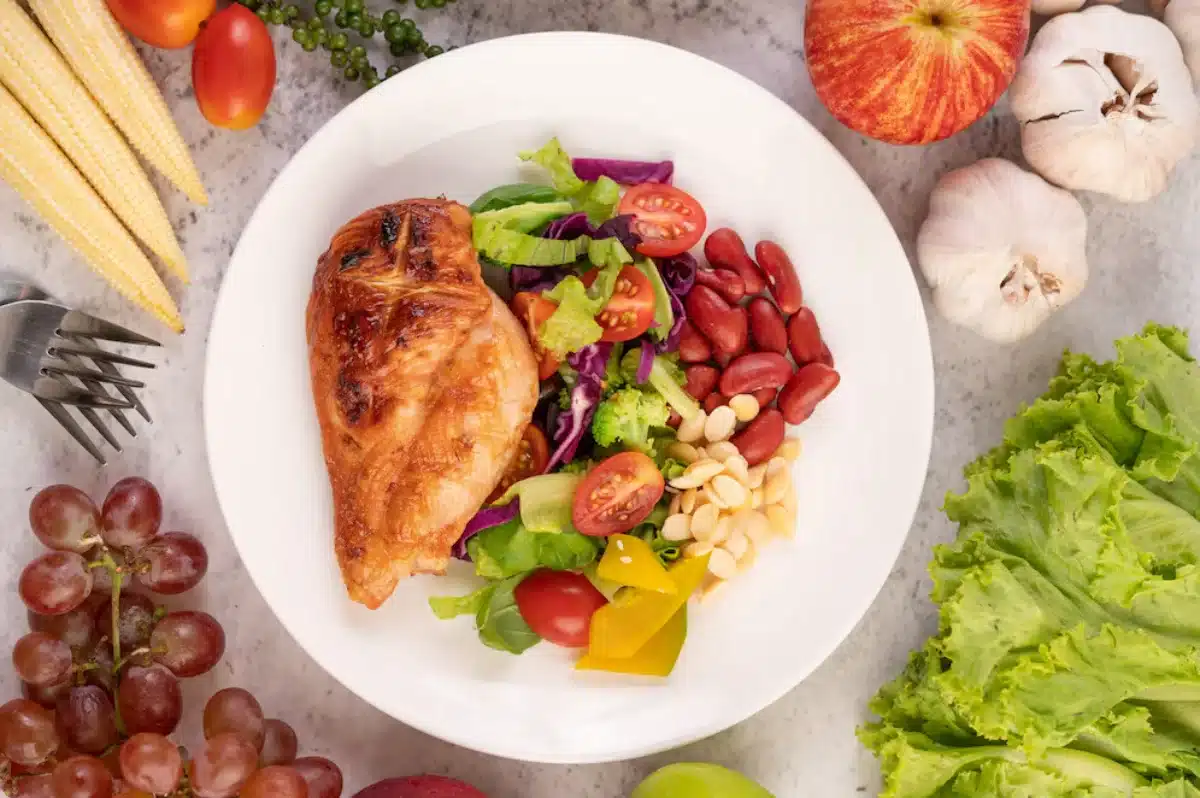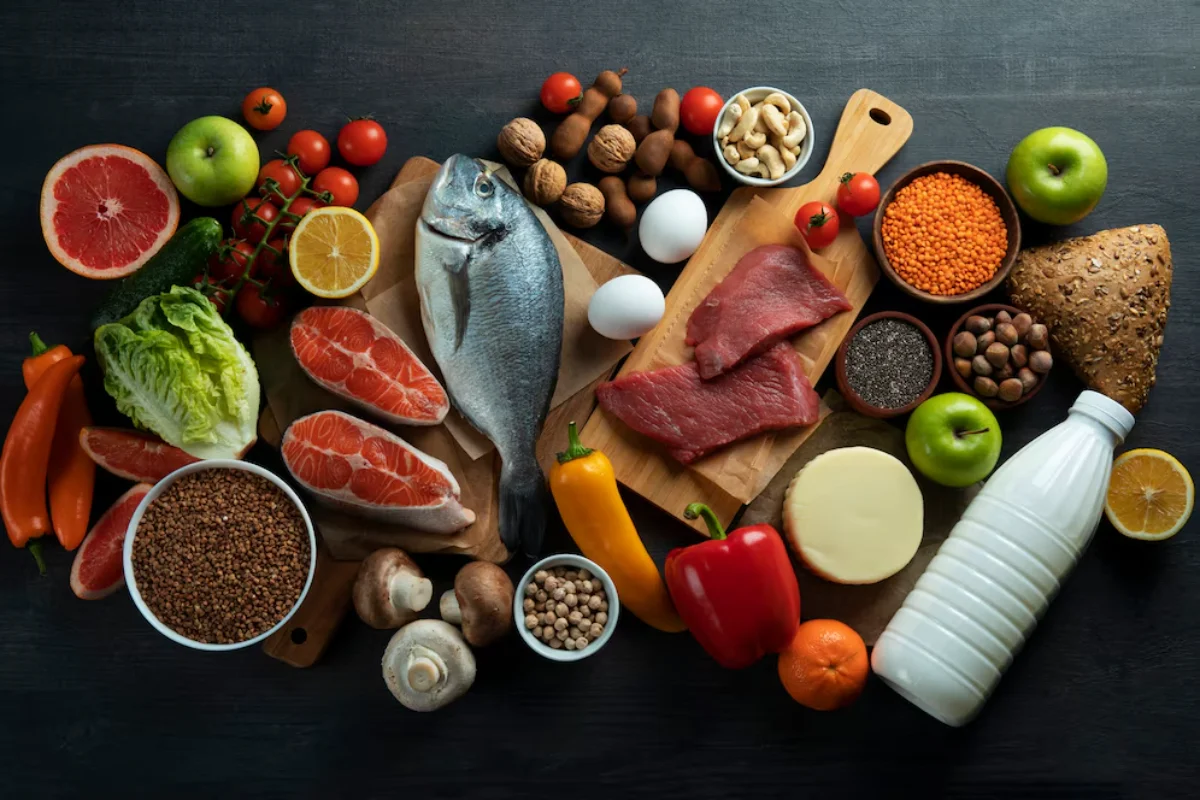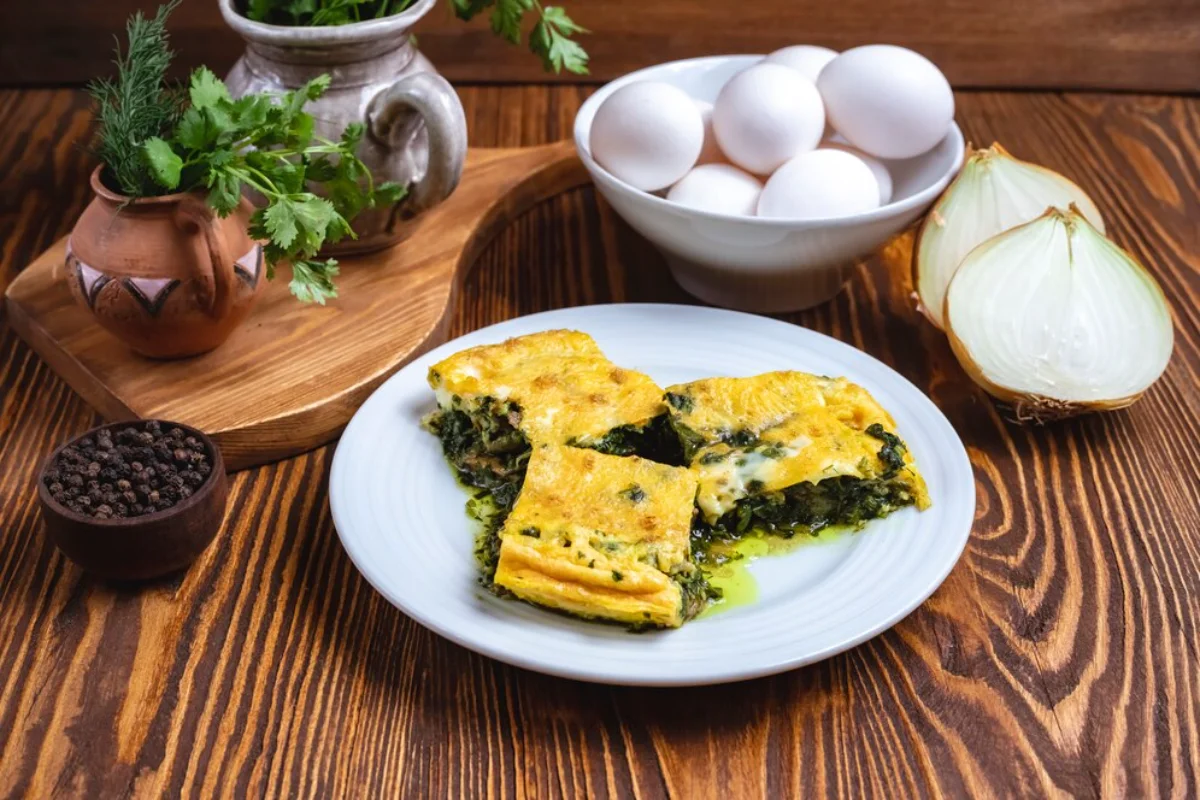
The Best High-Protein Meals for a Healthy Diet
Dietary proteins play a crucial role in maintaining good health, muscle synthesis, and weight management. Protein-rich foods can benefit athletes looking to maximise performance, those gaining lean muscle, and anyone having trouble feeling full.
Protein helps with many functions in the body. It repairs tissues, creates enzymes, and promotes immune health. However, many people struggle to get enough protein in their diets every day. Understanding how to incorporate protein-rich foods into meals can significantly impact energy and fitness goals.
In this guide, you’ll learn the best protein-filled foods, how to easily add protein to your meals, and high-protein recipes for various diets. By the end, you will have everything you need to create a balanced, nutrient-rich, high-protein meal plan.

Why a High-Protein Diet is Important
Protein is one of the three macronutrients (carbs and fats) essential for many body functions. Here’s why a high-protein diet is helpful:
- Muscle Growth and Repair: Important for anyone doing strength training. Protein offers the amino acids needed for muscle recovery.
- Weight Management: This helps you feel full, which can reduce calories and support fat loss.
- Metabolism Boosting: The body burns more calories digesting protein than fats or carbs, known as the thermic effect of food (TEF).
- Supports Immune Function: Amino acids in protein help with cell repair and immune health.
- Maintains Bone Health: Research shows that protein supports bone density and strength, lowering osteoporosis risk.
To enjoy these benefits, include high-quality protein sources in your meals while balancing other nutrients.

Best Protein-Rich Foods to Include in Your Diet
Animal-Based Protein Sources
Animal proteins are complete proteins containing all nine essential amino acids. Here are some top options:
- Chicken Breast: Lean and versatile, with about 31g of protein per 100g.
- Eggs: One large egg has 6g of protein and is rich in choline.
- Salmon: Contains 25g of protein per 100g and heart-healthy omega-3s.
- Greek Yoghurt: Offers 10g of protein per 100g and supports gut health.
- Cottage Cheese: Has 11g of protein per 100g, great for evening meals.
- Lean Beef: Provides 26g of protein per 100g and essential nutrients like iron.
- Turkey Breast: High in protein (29g per 100g) and low in fat.
Plant-Based Protein Sources
For vegetarians and vegans, these plant foods are packed with nutrition and fibre:
- Lentils: About 9g of protein per 100g and high in dietary fibre.
- Chickpeas: Offer 7g of protein per 100g and can be used in many dishes.
- Quinoa: A complete protein with 8g per cup, perfect instead of rice or pasta.
- Tofu and Tempeh: Soy-based proteins with 10-19g per 100g and probiotics.
- Nuts and Seeds: Almonds (6g per 28g) and chia seeds (5g per 28g) add healthy fats.
- Edamame: A tasty snack with 11g of protein per 100g.
Mixing animal and plant-based proteins helps create a well-rounded, high-protein diet.

How to Add Protein to Meals
Boosting protein in your diet is simple. Try these tips:
Breakfast Ideas
- Scrambled eggs with spinach and feta – A protein-rich start to your day.
- Greek yoghurt with nuts, berries, and honey – Adds texture and healthy fats.
- Protein smoothie with banana, oats, and whey protein – Quick and filling for busy mornings.
- Oatmeal with chia seeds and almond butter – A plant-based protein option.
Lunch Options
- Grilled chicken and quinoa salad are high in protein and fibre and great for meal prep.
- Tuna and avocado whole-grain wrap – Provides protein and healthy fats.
- Lentil soup with whole wheat bread – A solid plant-based protein meal.
Dinner Meals
- Salmon with roasted sweet potatoes and asparagus – Balanced and rich in protein.
- Stir-fried tofu with broccoli and brown rice – A simple plant-based dish.
- Beef and vegetable stir-fry with quinoa – Nutritious and satisfying.
Healthy Snacks
- Cottage cheese with sliced peaches – Great slow-digesting protein before bed.
- Hard-boiled eggs and almonds – Perfect post-workout recovery snack.
- Hummus with carrot sticks – A tasty plant-based protein snack.
High-Protein Meal Prep for the Week
1. Plan Your Protein Intake
Aim for 0.8–1.2g of protein per kg of body weight daily (more for active people). A meal plan helps keep your intake steady.
2. Batch Cook High-Protein Meals
- Grill chicken breast for salads and wraps.
- Prepare quinoa or lentils as a base for meals.
- Hard-boil eggs for easy snacks.
- Make a large pot of bean soup for quick lunches.
3. Store and Portion Meals
- Use airtight containers to keep meals fresh.
- Pre-portion meals to help control serving sizes.
- Label containers with dates to track freshness.
Customise your Protein Meals Today!
Eating more high-protein foods can help with muscle gain, weight management, and overall health. From animal to plant proteins, there are so many options that you can choose from that will fit your lifestyle.
So today, plan some protein-rich meals, batch-cook your favourite recipes, and change your diet gradually. What’s your go-to way to add protein to meals? That sounds good—tell us your hacks in the comments!


